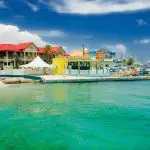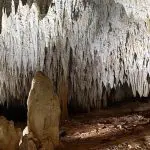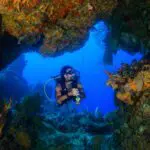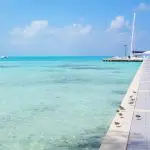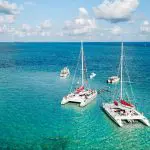Coral reefs are diverse, complex ecosystems that occupy less than 0.1% of the ocean floor. But remarkably, they provide a natural habitat for around 25% of all marine species! Here in Grand Cayman, we cherish our coral formations, striking the balance between allowing visitors to explore them while also conserving them for future generations.
At Red Sail Sports, we provide an exciting range of Grand Cayman scuba diving trips across our island home, including departures from Seven Mile Beach and the East End. With a deep understanding of these incredible ecosystems, we have created this guide to help you make the most of your time here while ensuring you respect our spectacular underwater world.
Scroll down and start your guide to exploring the coral reefs in Grand Cayman! If you have any questions about our diving experiences or Grand Cayman boat excursions, please contact us for the answers you need!
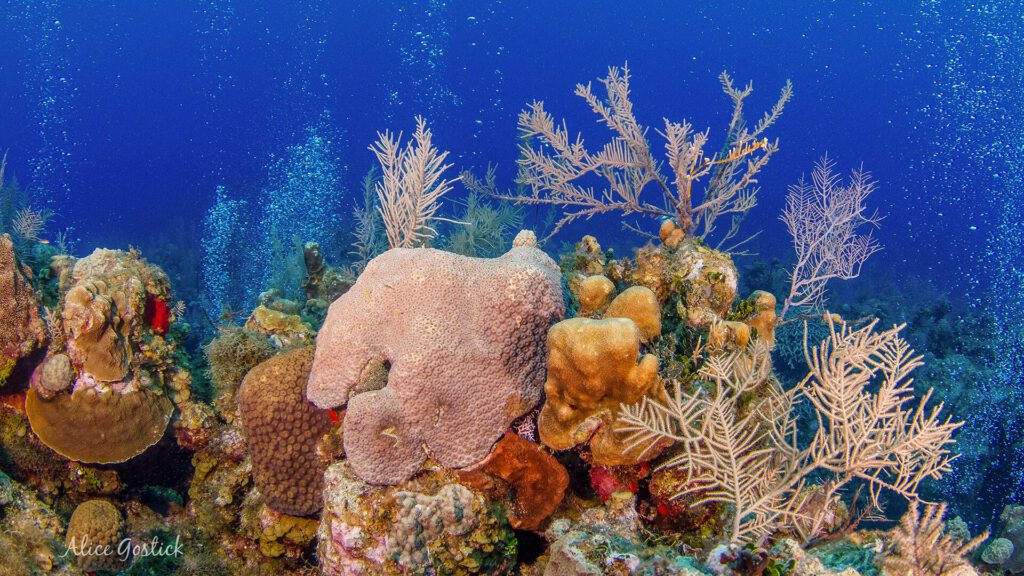
Where is Grand Cayman?
Our island home is a British Overseas Territory in the heart of the Caribbean, sitting south of Cuba and northwest of Jamaica. Grand Cayman, the largest of the three Cayman Islands, is renowned for its spectacular underwater landscapes, making it a haven for snorkelers and divers alike.
Our Ultimate Guide to Diving in the Cayman Islands is the perfect introduction to what divers can expect here, so be sure to read it when you have finished here!
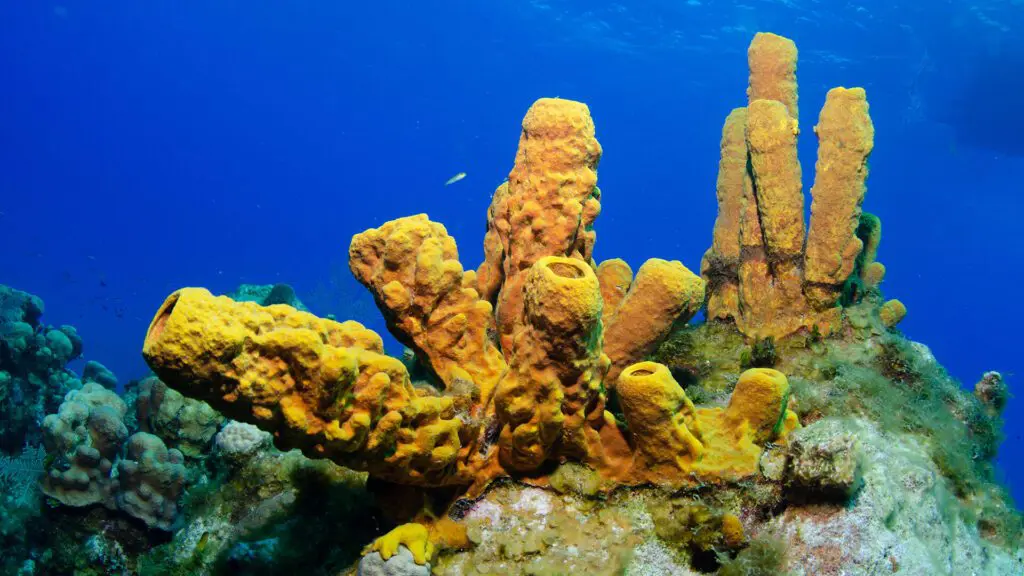
What are Coral Reefs and How were Grand Cayman’s Formed?
The seeds of coral reef formation are free-floating coral larvae. These organisms attach themselves to submerged rocks (or other hard surfaces, such as shipwrecks) around the edges of islands and land masses. Over time, the coral formation grows, developing into either a barrier reef, fringing reef, or atoll.
Corals are colonies consisting of hundreds, if not thousands, of tiny animals known as polyps. Related to sea anemones and jellyfish, polyps use calcium carbonate from the seawater to create a tough external skeleton. These skeletons can grow into enormous structures that, as a collective, provide the limestone framework for a tropical coral reef.
The Cayman Islands are unique geological formations, part of the peaks of an underwater mountain range known as the Cayman Ridge. The deepest part of the Caribbean Sea (around 25,216 feet/7,686 meters below sea level) lies to the south of our islands. The low-lying limestone platforms and narrow island shelves around Grand Cayman are perfect for supporting coral reefs.
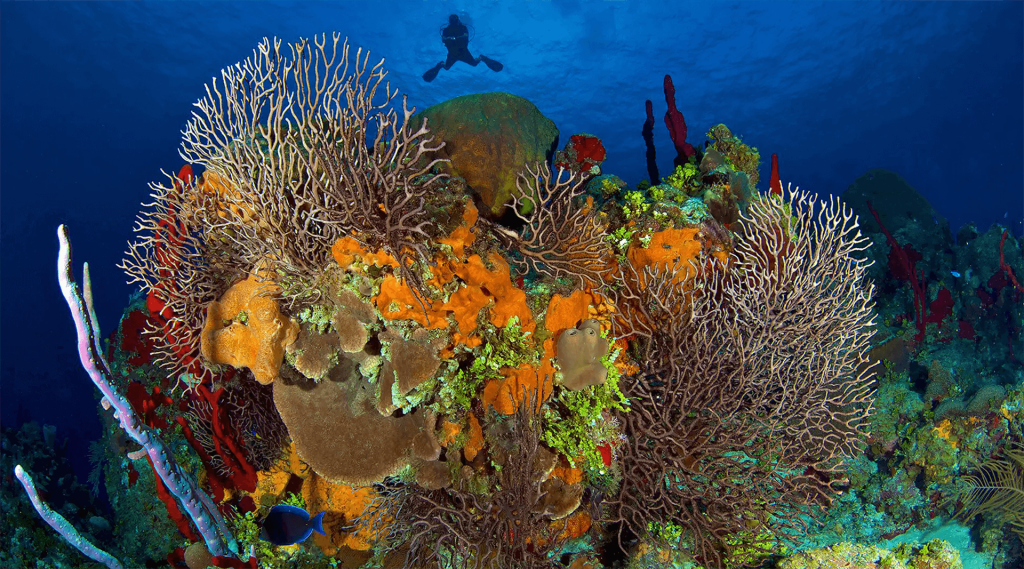
Dive into Paradise: The Best Coral Sites in Grand Cayman
At Red Sail Sports, we love guiding divers from all over the world to the most enchanting coral sites in Grand Cayman.
Just some of our favourite locations for an unforgettable experience include:
- Northern Lights: A vibrant coral garden teeming with marine life, Northern Lights offers a kaleidoscope of colours beneath the surface.
- Trinity Caves: One of the most popular dive sites on the west side of Grand Cayman with typical Caribbean life like nurse sharks, reef sharks, eagle rays, turtles, stingrays, and lots of fish.
- Oro Verde Wreck: Explore the remains of a sunken Venezuelan freighter that is now an artificial reef home to a variety of marine species.
- Paradise Reef: As the name suggests, Paradise Reef is a true underwater paradise, with intricate coral formations and a plethora of tropical fish.
- Babylon (North Wall): Venture into the depths of Babylon, located along the famous North Wall, and discover a mesmerizing underwater landscape.
- USS Kittiwake: For those seeking a unique diving experience, the USS Kittiwake, a sunken submarine rescue vessel, offers an otherworldly exploration.
We take a closer look at these stunning sites (and more) in our Guide to Coral Reef Diving in Grand Cayman. It’s a must-read for anyone planning to explore our island’s underwater world!
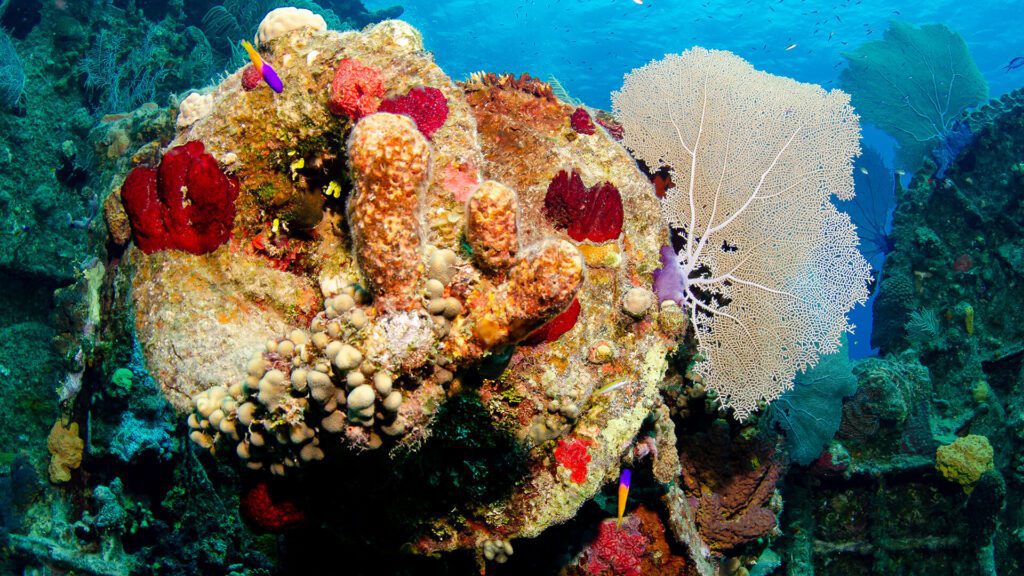
Gain Your PADI Certification in Grand Cayman!
Do you have your PADI certification? Only certified divers can join our Grand Cayman scuba diving trips. If you aren’t qualified yet, don’t worry! Our comprehensive range of dive courses in Grand Cayman has everything you need, from PADI Open Water Diver courses to PADI Specialties. Our experienced instructors can equip you with the necessary skills and knowledge for safe and enjoyable diving experiences!
If you only plan to snorkel, you can simply make use of our snorkel equipment rental in Grand Cayman. Hire top-notch gear on a daily or weekly basis and explore the shallow wonders that await beneath the surface.
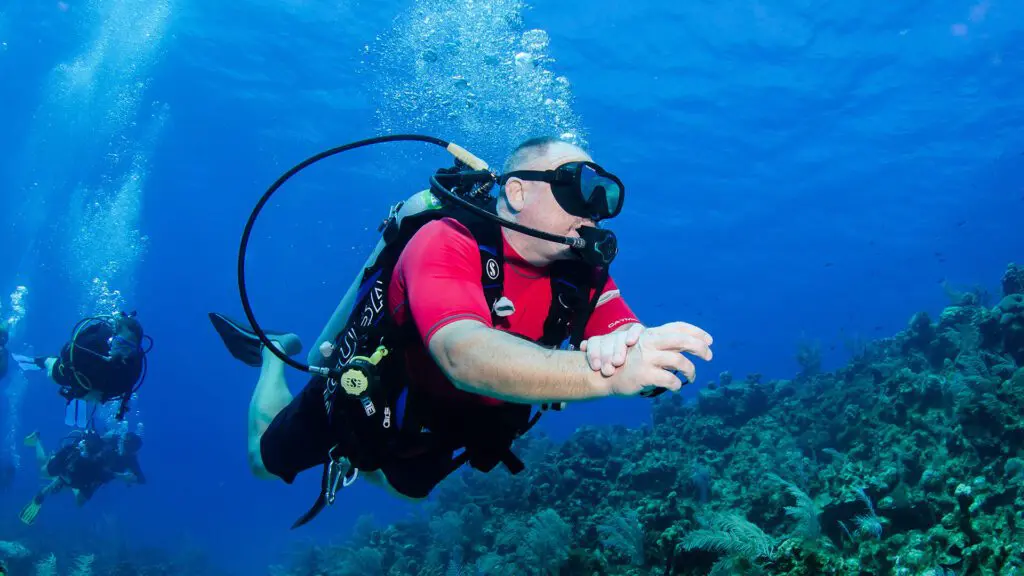
The Importance of Coral Reefs in Grand Cayman and Globally
Coral reefs are not just breathtaking ecosystems; they are the lifeblood of the oceans. As mentioned in the introduction, around 25% of marine species call coral reefs home. You can find just a handful of the creatures that live in Grand Cayman’s reefs in the next section.
Coral reefs also protect coastlines from storms and erosion by buffering 97% of the energy from waves. They have huge economic and recreational value for local communities too, providing unique opportunities for sustainable fishing and tourism.
On a far grander scale, coral reefs contribute massively to the overall health of our planet. Their importance cannot be overstated. At Red Sail Sports, we are committed to the preservation of these vital ecosystems, actively participating in local conservation initiatives to ensure the longevity of Grand Cayman’s reefs.
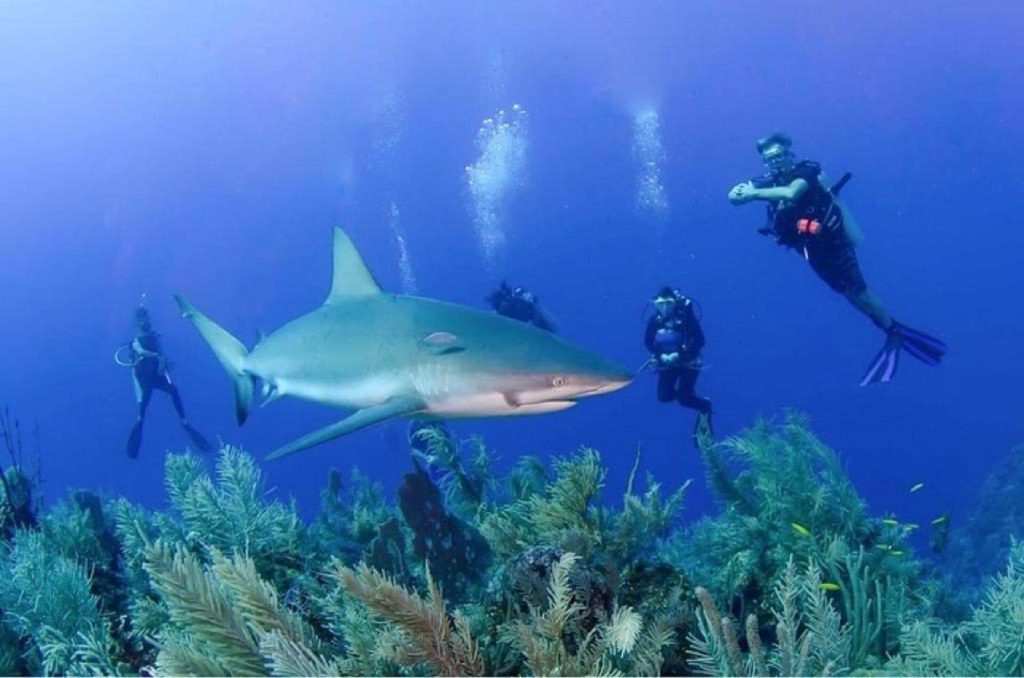
What Marine Life Can You See in Grand Cayman?
Grand Cayman’s coral reefs are teeming with marine life. Our Guide to Fish Species and Sea Creatures in Grand Cayman covers this topic in detail, so head there for a more in-depth look. But for now, just some of the hundreds of aquatic species in our waters include:
- Juvenile Spotted Drum
- Puffer Fish
- Lionfish
- Blue Tang
- Jawfish
- Black Durgon
- Reef Squid
- Green Moray Eels
- Eagle Rays
- Sea Turtles
- Caribbean Spiny Lobsters
- Nurse Sharks
- Caribbean Reef Sharks
- Black Tip Sharks
The coral gardens are also adorned with a breathtaking variety of corals and sponges, creating an underwater wonderland that you will never tire of exploring!
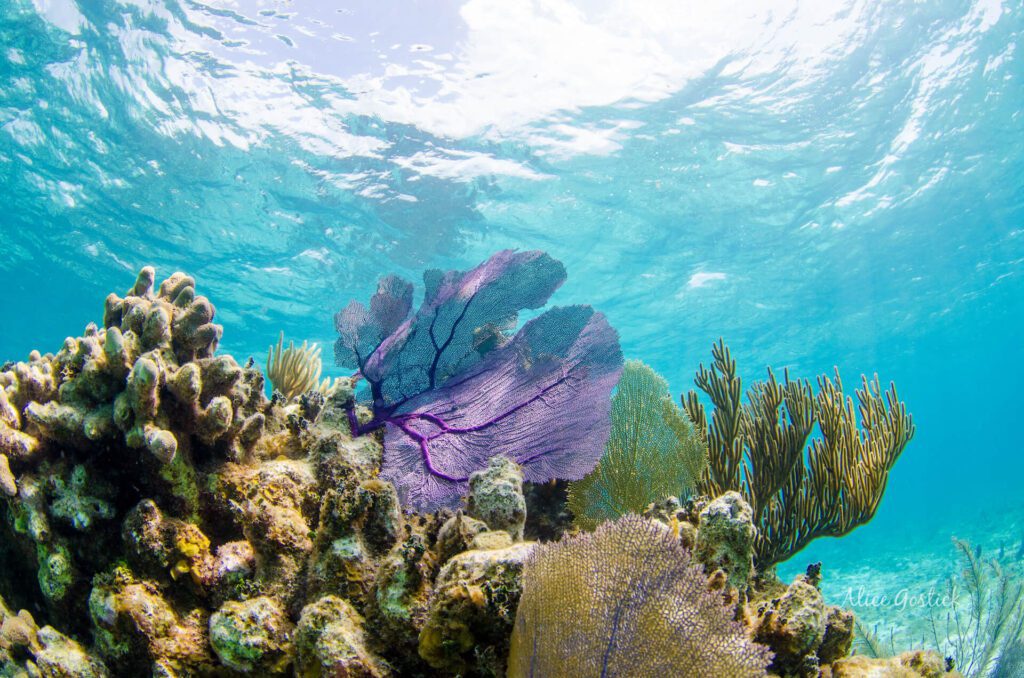
How to Behave When Exploring Coral Reefs in Grand Cayman
To ensure the preservation of Grand Cayman’s coral reefs, it’s crucial to follow responsible and sustainable practices when visiting the best places to snorkel and the best scuba diving sites in the Cayman Islands.
Red Sail Sports encourages all explorers to:
- Refrain from touching or standing on the coral: Even the lightest touch can harm these delicate ecosystems.
- Use reef-safe sunscreen: Chemicals in traditional sunscreens can be harmful to coral. Opt for reef-safe alternatives.
- Maintain a safe distance from marine life: Admire from afar and avoid disturbing the natural behaviour of the creatures you encounter.
- Do not feed the fish: It disrupts their natural feeding habits and can lead to dependency on human food.
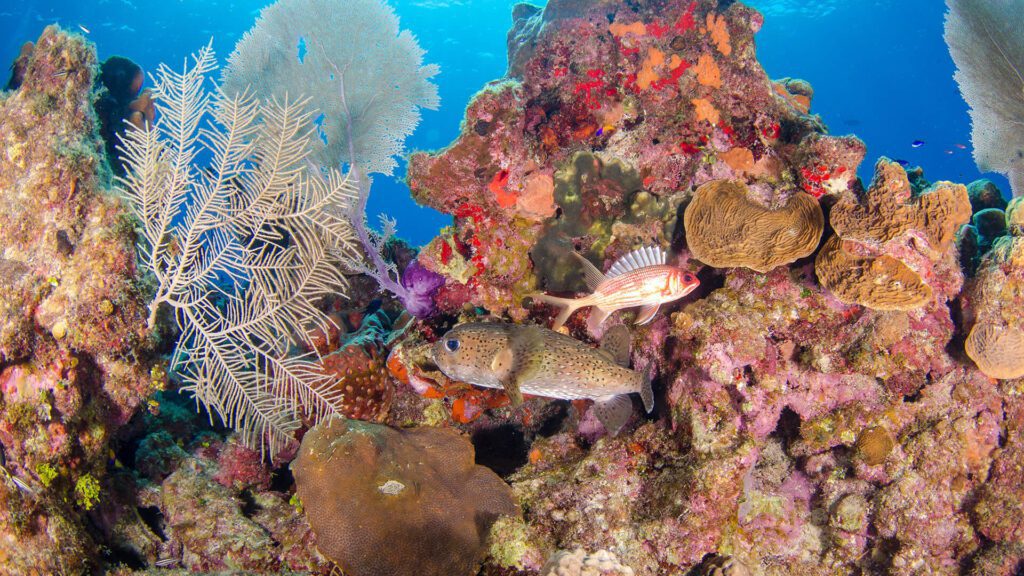
Book Your Spot On Our Grand Cayman Diving Trips!
We hope you’ve enjoyed this guide to exploring coral reefs in Grand Cayman and, most importantly, have a new-found appreciation for these unique ecosystems. We also hope we’ve inspired you to explore their jaw-dropping beauty in person!
Browse our full range of Grand Cayman scuba diving trips to find the perfect underwater adventures for you. Our team is here and happy to help with any questions, so please get in touch if you need more information.

